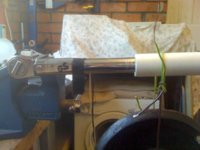Scooterbrain
XS650 Enthusiast
Yes of course I have Torque wrenches.
They do not measure ring gap however which is what I said that I forgot to do. I was hoping to avert tearing this thing back down to check a ring gap that may be ok but certainly its easier to do that now than after the engine is back in the bike and exibiting an issue.
They do not measure ring gap however which is what I said that I forgot to do. I was hoping to avert tearing this thing back down to check a ring gap that may be ok but certainly its easier to do that now than after the engine is back in the bike and exibiting an issue.

